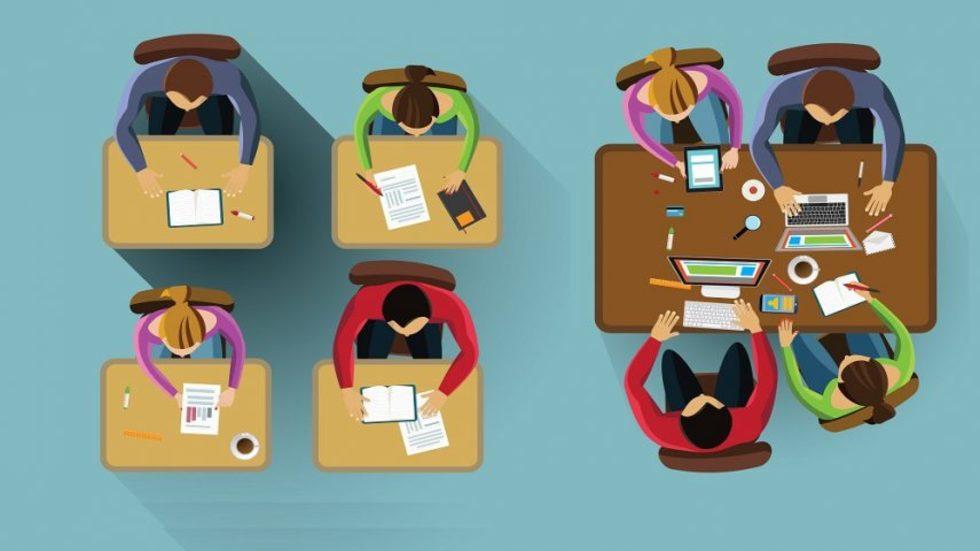‘Ability Grouping’ is defined as the practice of grouping learners together based on their strengths and talents within a learning environment. Ability grouping experts argue that this process allows educators to customize instructional content to align better with students’ needs and improve student achievement.
For better outcomes, educators can also provide the necessary repetition and reinforcement for lower-performing students and an advanced level of education for higher-performing students.
We may also define Ability grouping as a process of sorting students into levels based on their ability or achievement in the classroom. Since every coin has two sides, the opponents of this practice argue that ability grouping fails to benefit any student, and it places poor and minority children disproportionately in lower grades where they receive lower quality education than other groups.
Another definition by the National Education Association, ability grouping, also popular as tracking, is "the practice of grouping learners together according to their talents in the classroom." Unlike cooperative learning, ability grouping places students in homogenous groups or classrooms based on their academic abilities. For example, one group could be made up of the most successful pupils, another could be made up of "average" pupils, and the last could be made up of pupils in difficulty.
What are the types of Ability Grouping?
There are two types of ability grouping:
- Within Class Grouping: A teacher divides students into small groups based on their understanding of a subject.
- Between Class grouping: In this descending technique, a school assesses the different levels of student achievement and places them in different classes or course sequences accordingly.
What are the advantages and disadvantages of Ability Grouping?
To better understand the term Ability Grouping, we bring you the ability group's advantages and disadvantages borne out by researches on the topic.
Advantages
A faster learning pace: Exceptional students may get bored occasionally or even take action after finishing their work or understanding a concept much faster than peers. However, in groups or classrooms that practice ability grouping, they can move faster along with their peers of the same capacity level.
More individualized attention: In mixed classes, teachers usually allocate their time equally among students. But in classrooms practising ability grouping, teachers can more easily allocate their attention to the low-capacity learners or slow learners who need it most and teach at a pace that works best for each group, i.e. classes that use Ability Grouping helps provide more individualized attention.
Boosts confidence (for between-class grouping): It is likely that in classes of students with mixed abilities, Students in difficulty can sometimes develop hurtful perceptions of themselves, like labelling themselves as the "dumb kid" or the one who scores the lowest score on a test. However, in a group between classes, students are more likely to give the same results, which decreases the feeling of insufficiency or unhealthy competition.
Achievement improves: Grouping heterogeneously except for reading instruction (commonly referred to as "The Joplin Plan") improves reading achievement. Also, allows students to progress at their rates---can result in improved achievement.
Disadvantages
Hurt feelings: As already mentioned, inability grouping, students are divided into groups based on their strength, though the classification is done to help learners both the groups (let say red for low-capacity learners and green for gifted students) will often notice the disparities between groups. This may lead to hurtful jokes, name-calling, and social divisions that might not have otherwise arisen if not for the ability grouping.
Unfair Divisions: Regardless of the measure you use, it is inevitable that some students end up in a group that does not correspond to their actual abilities. Whether placed too high or too low, students can be quickly de-motivated when they feel outperforming or underperforming their peers.
False expectations of teachers: Even the most diligent teachers may sometimes subconsciously treat students differently depending on their groups. If teachers unintentionally begin to lower their expectations for students in difficulty, for example, these students may start to feel that no one believes in them and behave at a lower level.
Achievement gaps exaggerate: Since low-capacity learners are given individualized attention, time spent in the groups is the time spent away from the regular classroom instruction, which may cause kids to lag, also reduce the possibility that they will be able to return to mainstream instruction.
Once students are grouped, they generally stay at that level for their school careers, and the gap between achievement and levels becomes exaggerated over time. The notion that students' achievement levels at any given time will predict their achievement in the future becomes a self-fulfilling prophecy.
Should schools practice Ability grouping? What're your views? Do let us know in the comments.
